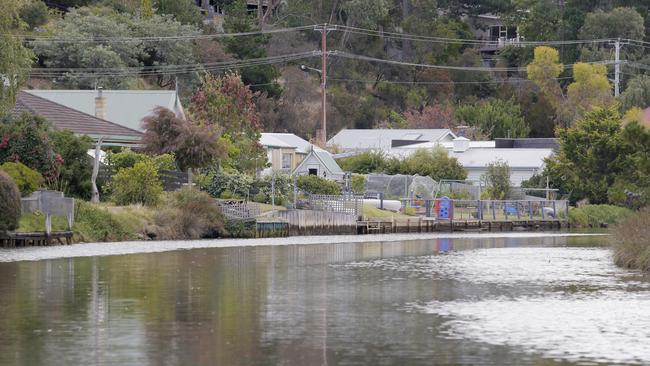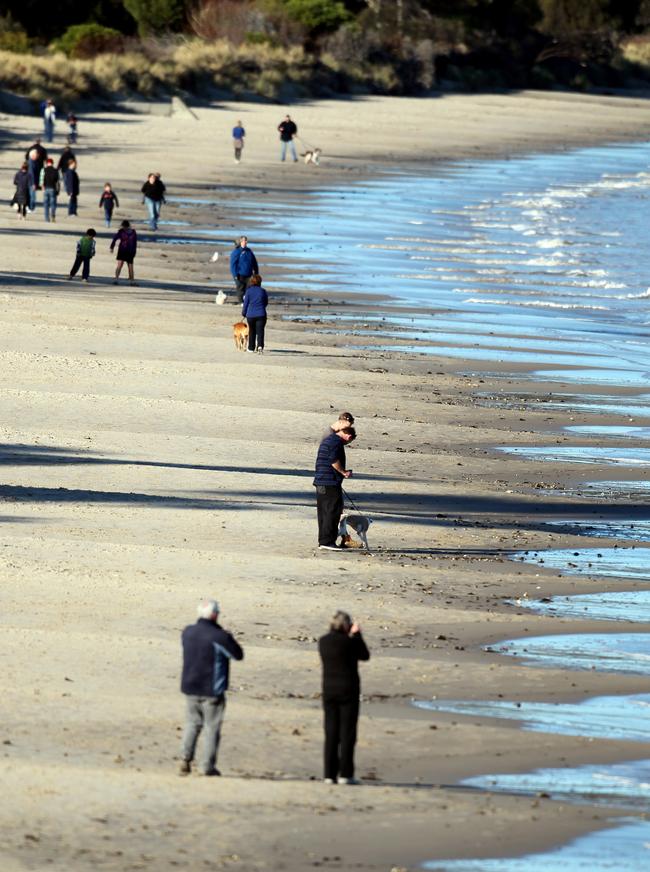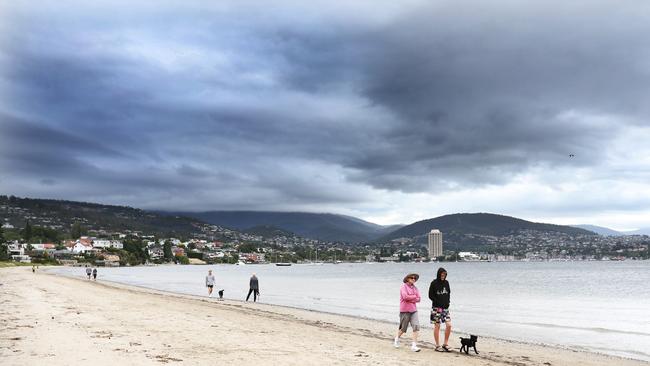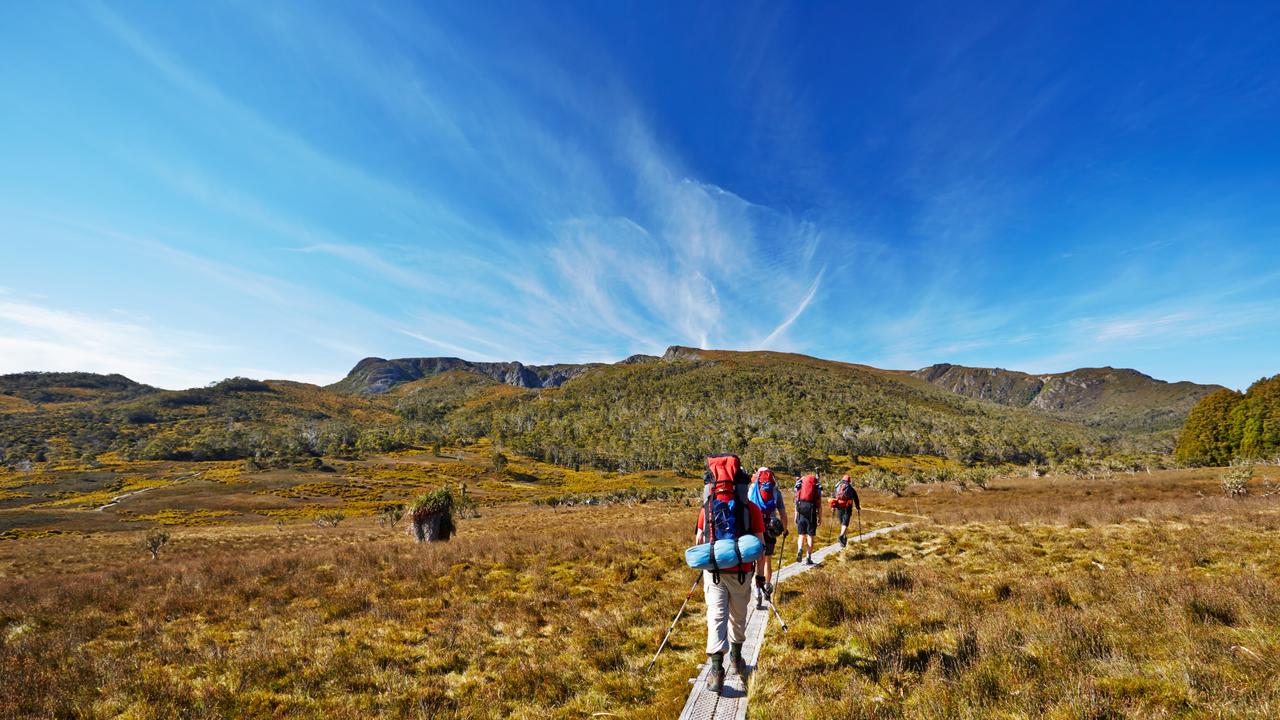Hobart’s River Derwent: Its dirty secrets revealed
IT’s easy to look out on to Hobart’s River Derwent and remark at its sparkling blue water. But it all is not what it seems ... it has a few dirty secrets that are hidden from most.

Tasmania
Don't miss out on the headlines from Tasmania. Followed categories will be added to My News.
RECENT beach closures in Hobart has cast a spotlight on the health of the River Derwent.
Last week, three popular beaches were closed because of high bacterial counts and, whenever there is rain, coastal areas along the Derwent Estuary face regular pollution spikes because of stormwater runoff and sewerage contamination.
Since 2000, the Derwent Estuary Program, along with relevant councils, has been monitoring bacteria levels at 18 beaches and 19 bays along the waterway every week.
After 20 years’ experience in the program, DEP chief Christine Coughanowr said the main cause of poor water quality across the catchment was heavy rain discharged to the Derwent via stormwater systems.
She said the rainfall experienced towards the end of last month had caused more sites to fail.
“It’s disappointing of course to have bad water quality, though this is not unusual in most cities following heavy rain,” she said.

“Derwent beaches actually rate fairly well, compared to many other capital cities. However, more can be done to improve our water quality.
“Heavy rain can result in short-term pollution and on rare occasions beach closures, such as at Kingston Beach last week,” she said.
Ms Coughanowr said that as well as rubbish, sewerage pollution was another concern. She said during heavy rain stormwater may also enter the sewerage system, causing overflows of mixed sewerage and stormwater in some areas.
As part of the Beach Watch and Bay Watch programs, which run between December and March, each site is monitored and must return a reading below 140 counts of bacteria per 100ml of water to be safe to swim in.
Each site also has a five-year long-term status where poorer quality areas are monitored more thoroughly and require consistently good results to be reopened, even if they record a safe reading.

Of the beaches, just Nutgrove Beach West, at Sandy Bay, scored a fail result by the end of last week, despite recording a low reading of 20. It is also the only site with a poor long-term outlook, meaning it can only be reclassified after five years of better results.
Earlier last week, the middle of Howrah Beach was closed to swimmers after it failed with a bacteria count of 426. The northern and middle sections of Kingston Beach also were closed. All three have since been reopened.
Also last week, 10 of the 19 bays along the river had failed tests.
These included the Old Beach Jetty, New Town Bay, Geilston Bay, Lindisfarne Bay, the Hobart Rivulet mouth, Waterman’s Dock, Marieville Esplanade, Kangaroo Bay, Browns River and Berriedale Bay.
The readings were as low as 52 counts at Waterman’s Dock on the waterfront but as high as 4884 in Browns River at Kingston. The average reading across the 10 sites was 817 counts.
Ms Coughanowr said an important way to manage the problem was through better stormwater treatment. She said councils had built a number of projects to capture and treat stormwater through systems such as vegetated swales, which are basins to drain run-off and filter pollutants, and wetlands.
“We’d like to see that improved upon in the future. Also, some stormwater and sewerage infrastructure is quite old and may have leaks or cracks periodically. This is part of the ongoing work by TasWater,” she said.

It also comes down to personal responsibility, says Ms Coughanowr.
“Individuals can also make a difference by picking up after their dog, not feeding the ducks and gulls and not pouring stuff down stormwater drains.”
Hobart City Council Alderman Jeff Briscoe said the council was aware of the problems and noted that possible mitigation included gutter flushing, swales, capturing storm-water for use in gardens at new subdivisions and educating people about the need to clean up dog faeces.
Clarence Mayor Doug Chipman said his council was trying to improve the stormwater outflow through water catchment plans as well as pollutant traps.
“Water catchment plans for urban areas are being developed around the city, using water sensitive urban design principles, which will be looking at how the final water entering the Derwent will be in the best condition possible,” Ald Chipman said
Kingborough Mayor Steve Wass said in the long term, council would step up measures to prevent pollution flowing into Kingston Beach waters by expanding its Wetlands Project as well as installing more gutter traps to filter out pollutants.
TasWater was contacted for comment.


